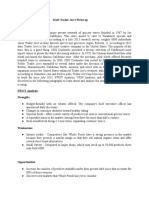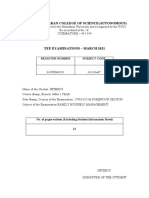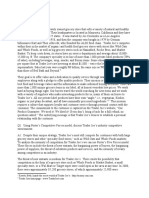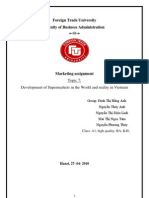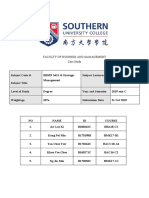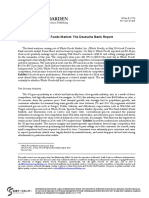0% found this document useful (0 votes)
19 views15 pagesFull Text
Madisson Magee's thesis analyzes Trader Joe's business model, focusing on its management strategies and competitive advantages in the grocery industry. The study identifies challenges the company faces due to increased competition and expansion, and recommends enhancing marketing through social media and updating technology to improve customer experience. The findings suggest that while Trader Joe's maintains a loyal customer base with its unique offerings, adapting to market changes is crucial for continued success.
Uploaded by
nancyxjaimet75Copyright
© © All Rights Reserved
We take content rights seriously. If you suspect this is your content, claim it here.
Available Formats
Download as PDF, TXT or read online on Scribd
0% found this document useful (0 votes)
19 views15 pagesFull Text
Madisson Magee's thesis analyzes Trader Joe's business model, focusing on its management strategies and competitive advantages in the grocery industry. The study identifies challenges the company faces due to increased competition and expansion, and recommends enhancing marketing through social media and updating technology to improve customer experience. The findings suggest that while Trader Joe's maintains a loyal customer base with its unique offerings, adapting to market changes is crucial for continued success.
Uploaded by
nancyxjaimet75Copyright
© © All Rights Reserved
We take content rights seriously. If you suspect this is your content, claim it here.
Available Formats
Download as PDF, TXT or read online on Scribd
/ 15









